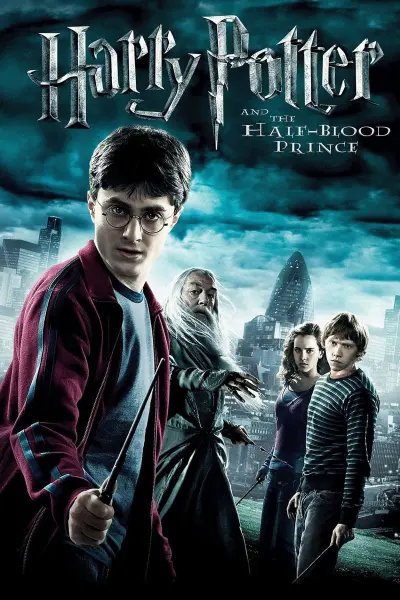
"Harry Potter and the Half-Blood Prince," the sixth film in the esteemed Harry Potter series, directed by David Yates, presents a captivating blend of fantasy and intricate narrative. Released in 2009, it adapts J.K. Rowling's novel of the same name, unfolding during Harry Potter's pivotal sixth year at Hogwarts. This film stands out for its rich thematic tapestry, delving into the complexities of identity, the perennial struggle of good vs. evil, and the nuanced moral choices in a progressively darkening wizarding world.
The plot is primarily driven by the darkening shadow of Lord Voldemort's increasing power over both the magical and non-magical realms, establishing an atmosphere of impending peril. Draco Malfoy emerges as a complex character, ensnared under Voldemort's command with a secretive task at Hogwarts. This development adds significant depth to his character, transcending the typical antagonistic portrayal seen in previous films. Meanwhile, Harry's journey is marked by his encounter with a mysterious textbook previously owned by the "Half-Blood Prince." This element not only propels Harry into the heart of unfolding events but also leads to crucial revelations about Voldemort's quest for immortality through Horcruxes, enhancing the film's sense of mystery and intrigue.
A key theme of the film is the exploration of identity, particularly highlighted through the revelation of the Half-Blood Prince's true identity - Severus Snape. This revelation profoundly alters our perception of Snape, adding layers to his character and intricately weaving him into the larger conflict against Voldemort. Dumbledore's role in revealing Voldemort's past as Tom Riddle to Harry serves as a crucial narrative device, emphasizing the role of choices in shaping one's identity.
The narrative is further enriched by the theme of Machiavellian machinations, where characters like Snape and Draco are portrayed with unexpected complexity and strategic cunning. This theme effectively challenges viewers' perceptions, aligning with the overarching motif of good vs. evil. The escalating conflict between Harry and Voldemort embodies this classic struggle, marking a high point in the series' thematic development.
A particularly poignant theme in the film is the concept of sacrifice. Harry comes to grips with the possibility that his confrontation with Voldemort might demand the greatest sacrifice – his life. This theme resonates through the actions and choices of other key characters, particularly Snape and Dumbledore, whose complex relationship and sacrifices add a profound emotional layer to the story.
Lastly, the film explores themes of love, death, trust, and redemption. The evolution of relationships among Harry and his friends, especially the romantic subplot involving Ginny Weasley, adds a relatable, human dimension to the film. This blend of darker themes with moments of humor and teenage experiences creates a multifaceted narrative that resonates with a diverse audience.
In summary, "Harry Potter and the Half-Blood Prince" is remarkable for its deep storytelling, character development, and thematic richness. Skillfully combining elements of fantasy, adventure, and emotional drama, it stands as a distinguished and compelling entry in the Harry Potter film saga.

